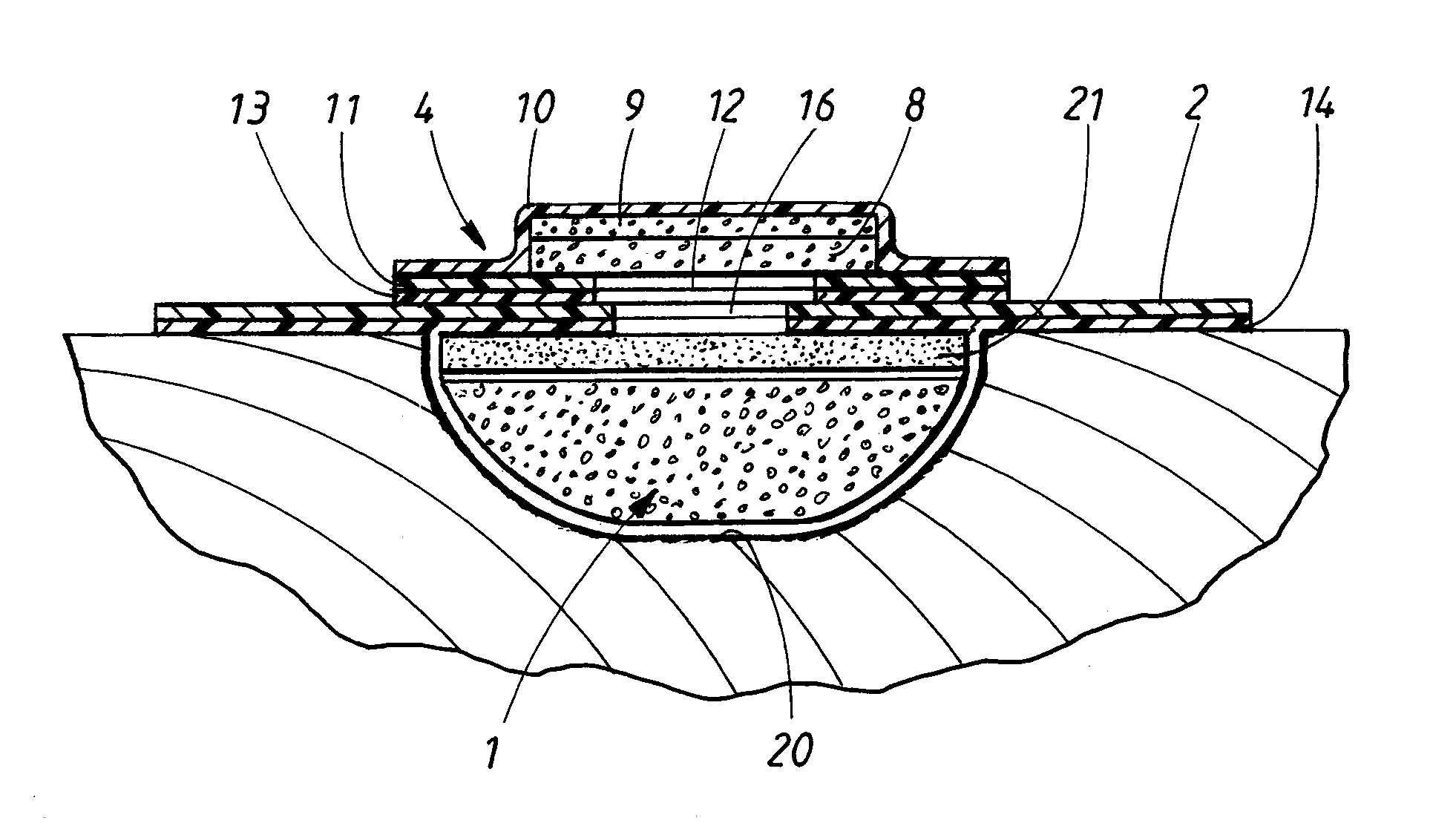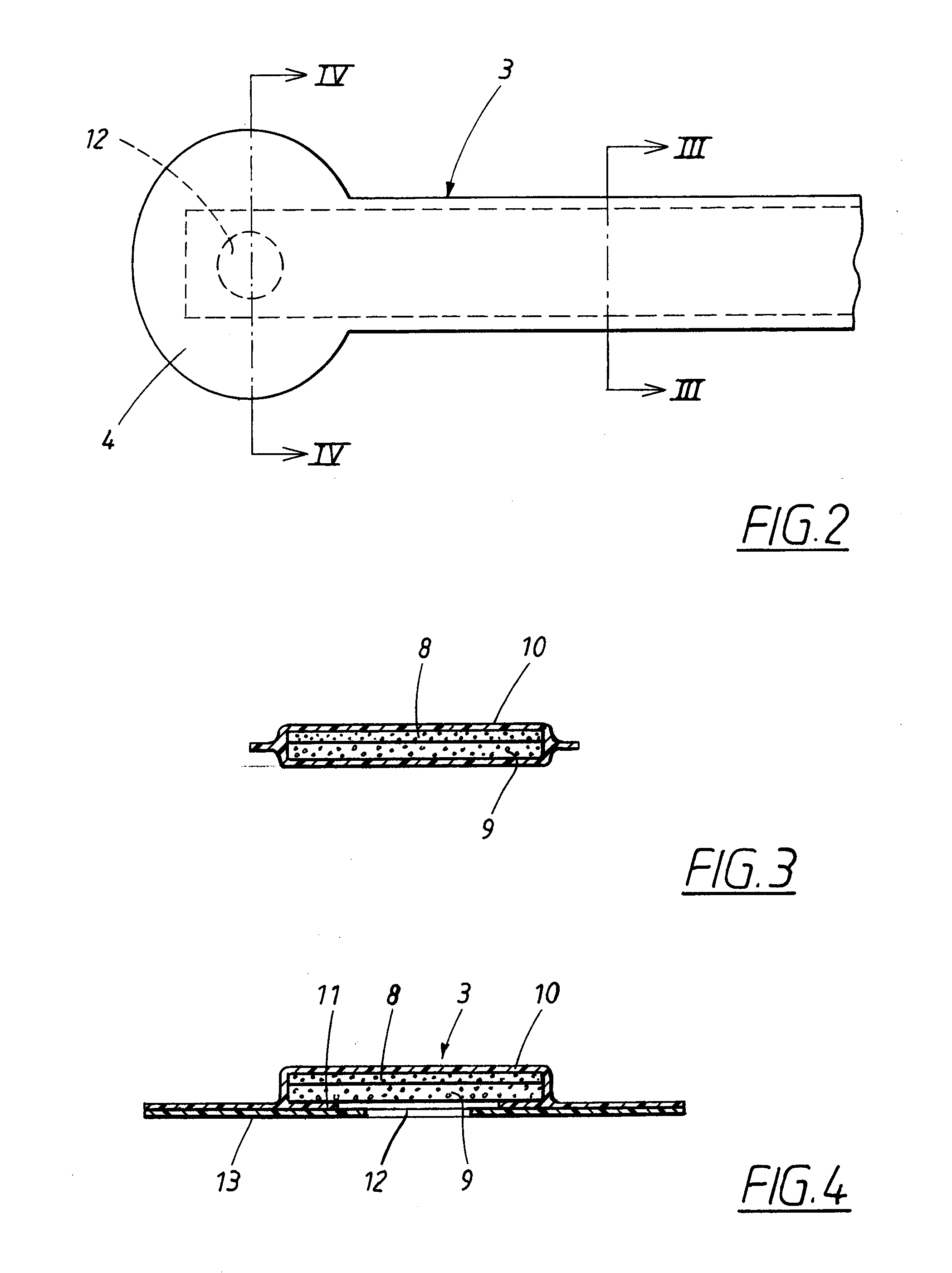Device for treatment of wounds with reduced pressure
a technology of wounds and devices, applied in the direction of suction pumps, other medical devices, dressings, etc., can solve the problems of disturbing the wound healing process, pain for patients, and inability to meet the needs of patients in all respects,
- Summary
- Abstract
- Description
- Claims
- Application Information
AI Technical Summary
Benefits of technology
Problems solved by technology
Method used
Image
Examples
Embodiment Construction
[0069]In FIG. 1, the patient has a wound on the calf. The device according to FIG. 1 comprises a hydrophobic, porous material piece 1, such as a hydrophobic, open-pored foam material. The material piece is cut to the shape of the wound to fill the wound pocket. A sealing film 2 is placed sealingly over the wound and is fixed to the skin of the user.
[0070]A tube 3 having a fixing member 4, which latter is fixed to the outer side of the sealing film over a hole made therein, connects the space in the wound pocket to an underpressure source 5. This is also intended to serve as a fluid-receiving element for fluid aspirated from the wound. The underpressure source is of elastically compressible configuration. Upon manual compression, air is squeezed out through a discharge valve (not shown), in the form of a one-way valve, to the environment. A further one-way valve (not shown) is fitted in the tube 3 or in the transition from the tube to the underpressure source. A suitable alternative ...
PUM
 Login to View More
Login to View More Abstract
Description
Claims
Application Information
 Login to View More
Login to View More - R&D
- Intellectual Property
- Life Sciences
- Materials
- Tech Scout
- Unparalleled Data Quality
- Higher Quality Content
- 60% Fewer Hallucinations
Browse by: Latest US Patents, China's latest patents, Technical Efficacy Thesaurus, Application Domain, Technology Topic, Popular Technical Reports.
© 2025 PatSnap. All rights reserved.Legal|Privacy policy|Modern Slavery Act Transparency Statement|Sitemap|About US| Contact US: help@patsnap.com



